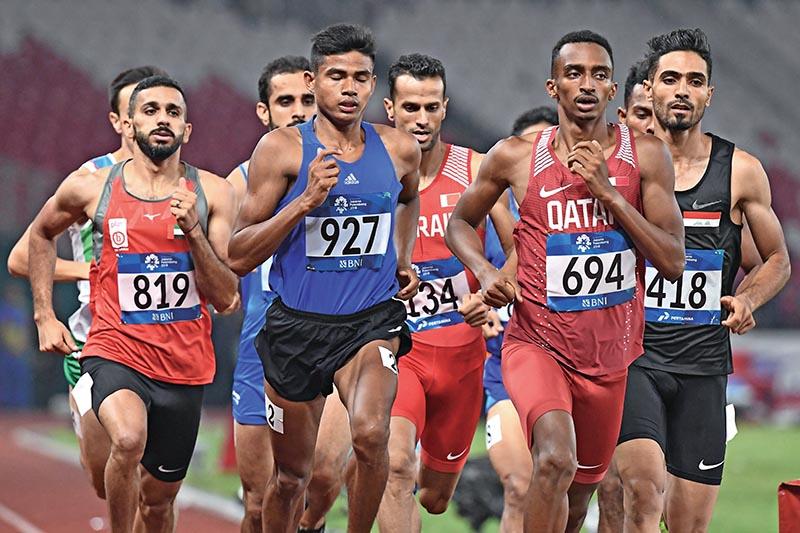Four Nepali athletes are set to represent the nation at the upcoming World Mountain and Trail Run Championship, showcasing their endurance and skill on a global stage. The prestigious event brings together elite runners from around the world to compete across challenging mountain and trail courses. Nepal, known for its rugged terrain and high-altitude environment, aims to make a significant impact through its talented contingent. This marks a major opportunity for Nepali athletes to demonstrate their prowess and gain international recognition in the growing sport of mountain and trail running.
Nepali Athletes Gear Up for World Mountain and Trail Run Championship
Four distinguished Nepali athletes are set to make their mark at the upcoming World Mountain and Trail Run Championship, showcasing Nepal’s growing prominence in the global mountain running community. These athletes have undergone rigorous training in the rugged terrains of the Himalayas, leveraging Nepal’s natural altitude and challenging landscapes to hone their endurance and agility. Their participation not only highlights the country’s untapped potential in trail running but also aims to inspire a new generation of runners keen to embrace this demanding sport.
The Nepali team, led by seasoned marathoner Sajan Karki, includes:
- Anjana Rana: Known for her impressive uphill sprints.
- Bijay Shrestha: A rising star in long-distance mountain trails.
- Laxmi Gurung: Celebrated for her strategic pacing in mixed terrain.
- Sajan Karki: Veteran athlete with multiple international finishes.
Below is a quick overview of their specialties and past achievements:
| Athlete | Specialty | Recent Achievement |
|---|---|---|
| Anjana Rana | Uphill Sprints | 2nd place, Everest Trail Challenge 2023 |
| Bijay Shrestha | Long-distance Trail | Top 10, Asian Mountain Run Cup 2023 |
| Laxmi Gurung | Strategic Pacing | Gold Medalist, Nepal National Trail Run 2023 |
| Sajan Karki | Endurance & Experience | 5th place, World Mountain Run 2019 |
Training Regimens and Strategies Behind Nepal’s Top Trail Runners
Behind the exceptional performances of Nepal’s elite trail runners lies a rigorous and multifaceted training approach that combines altitude adaptation, endurance, and technical skill. These athletes typically engage in daily runs across varied terrains, from steep mountain paths to rugged trails, often exceeding 30 kilometers to build both stamina and strength. Cross-training activities such as hill repeats, resistance workouts, and plyometric drills further enhance their explosive power and agility, essential for race conditions that demand swift adjustments to uneven ground.
Strategic planning is also critical, with coaches integrating periodization cycles to optimize performance peaks during major competitions. Nutrition and recovery routines are meticulously tailored, emphasizing locally sourced foods rich in carbohydrates and electrolytes. A glimpse at a typical weekly training breakdown shows the balance maintained between endurance, speed work, and rest:
| Day | Training Focus | Duration |
|---|---|---|
| Monday | Long trail run (altitude) | 3-4 hours |
| Wednesday | Hill repeats + plyometrics | 1.5 hours |
| Friday | Interval speed sessions | 1 hour |
| Sunday | Recovery jog and stretching | 45 minutes |
- Altitude adaptation: Overnight stays above 3,000 meters enhance oxygen efficiency.
- Mental conditioning: Focus and visualization techniques prepare athletes for extreme racing environments.
- Team collaboration: Group runs encourage pacing strategies and competitive spirit.
Experts Recommend Terrain-Specific Preparation to Boost Performance
To maximize their performance amid the challenging trails and diverse mountain landscapes, professionals emphasize tailored training that mirrors the competition environment. Athletes are encouraged to engage in terrain-specific workouts such as rock scrambling, steep incline sprints, and uneven surface runs. These practices not only condition the muscles for the unique physical demands but also sharpen balance and agility, critical for navigating unpredictable mountainous routes.
Key preparation strategies recommended by experts include:
- Training at high altitudes to improve oxygen utilization.
- Incorporating technical downhill running to build control and confidence.
- Strengthening core and lower body for stability on rocky paths.
- Practicing with trail-specific footwear to adapt to varying grip and support.
| Training Element | Benefits | Example Exercise |
|---|---|---|
| Altitude Conditioning | Enhances endurance and breathing efficiency | Long runs at 2,500m+ elevation |
| Technical Downhill | Improves speed control and reduces injury risk | Downhill intervals on rocky trails |
| Strength Training | Builds stability and power | Weighted lunges and squats |
| Trail Footwear Trials | Adapts foot muscles and improves grip | Runs on wet and loose surfaces |
To Wrap It Up
As the World Mountain and Trail Run Championship approaches, the eyes of the nation will be on these four Nepali athletes representing the country on the global stage. Their participation not only highlights Nepal’s growing presence in the international mountain running community but also inspires a new generation of runners back home. With challenging terrain and fierce competition ahead, the athletes are poised to showcase their endurance and skill, carrying the hopes of their country with them. Stay tuned for updates on their performance as Nepal continues to make strides in the world of mountain and trail running.

